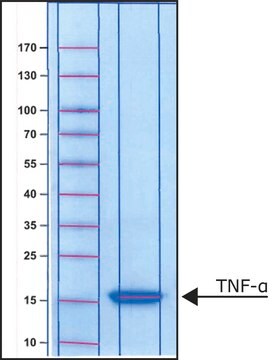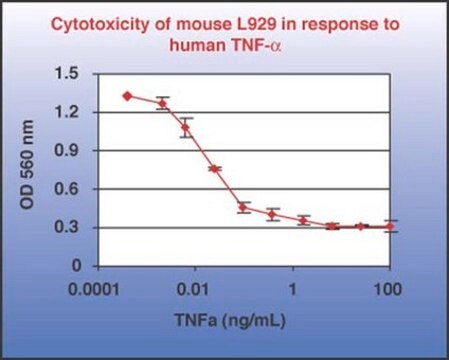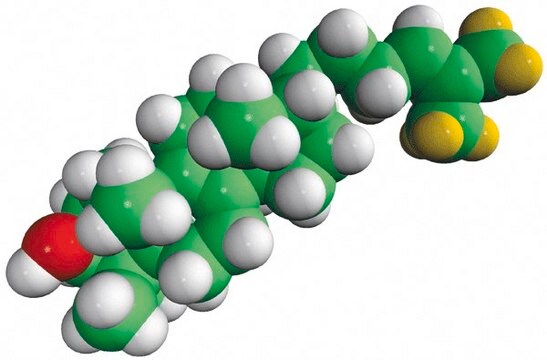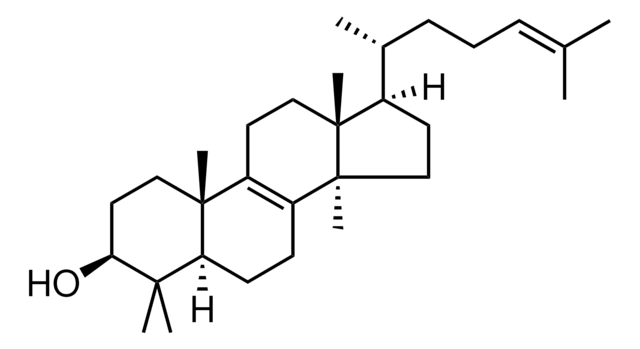654245
TNF-α, Mouse, Recombinant, E. coli
Synonym(s):
rmTNF-α, rm-Cachectin, Tumor Necrosis Factor-α
About This Item
Recommended Products
biological source
mouse
Quality Level
recombinant
expressed in E. coli
Assay
≥97% (SDS-PAGE)
form
lyophilized
mol wt
17,000 g/mol
manufacturer/tradename
Calbiochem®
storage condition
OK to freeze
technique(s)
cell based assay: suitable
impurities
≤100 pg/μg Endotoxin (pg/μg TNF-α)
shipped in
ambient
storage temp.
−70°C
Gene Information
mouse ... Tnf(21926)
General description
Recombinant mouse tumor necrosis factor-α (TNF-α), expressed in E. coli, is known for its direct tumoricidal capabilities. This inflammatory cytokine triggers a cascade of other cytokines and factors constituting the immune system′s response to infections and cancer. Additionally, it has been reported to influence changes in bone metabolism during inflammation. (TNF-α), a homotrimer protein, occurs in a soluble and transmembrane form.
Application
Biochem/physiol Actions
Additionally, TNF-α is associated with insulin signaling inhibition. Its removal ameliorates insulin sensitivity. The activity of the Jun N-terminal kinase (JNK) signaling pathway, which is abnormally elevated in obesity, is strongly activated by both TNF-α.
ED₅₀ = 20-50 pg/ml as measured in a cytotoxic assay using the TNF-α susceptible murine L-929 cell line in the presence of Actinomycin D (Cat. No. 114666)
Warning
Physical form
Reconstitution
Other Notes
Eck, M.J., et al. 1992. J. Biol. Chem. 267, 2119.
Legal Information
Storage Class Code
11 - Combustible Solids
WGK
WGK 1
Flash Point(F)
Not applicable
Flash Point(C)
Not applicable
Regulatory Listings
Regulatory Listings are mainly provided for chemical products. Only limited information can be provided here for non-chemical products. No entry means none of the components are listed. It is the user’s obligation to ensure the safe and legal use of the product.
JAN Code
654245-UG:
654245-10UG:
Certificates of Analysis (COA)
Search for Certificates of Analysis (COA) by entering the products Lot/Batch Number. Lot and Batch Numbers can be found on a product’s label following the words ‘Lot’ or ‘Batch’.
Already Own This Product?
Find documentation for the products that you have recently purchased in the Document Library.
Customers Also Viewed
Our team of scientists has experience in all areas of research including Life Science, Material Science, Chemical Synthesis, Chromatography, Analytical and many others.
Contact Technical Service






